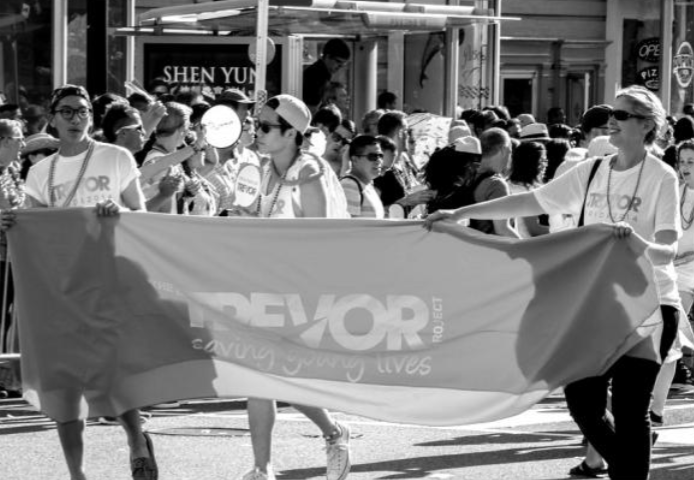By: Ben Theriault, Staff Writer
In the United States about 43,000 people take their own lives every year. This makes suicide the tenth leading cause of death and the second leading cause amongst people aged 15 to 24. Within the LGBTQ community the occurrence of suicidal ideation and action is statistically exponentially higher than it is among other groups.
According to the American Association of Suicidology, gay and lesbian youth are three times more likely to experience suicidal thoughts than straight youth; bisexual youth are five times more likely. In the past year approximately 29.4 percent of LGB youth attempted suicide in contrast to 6.4 percent of straight youth. Additionally, 40 percent of the transgender community has attempted suicide, with 92 percent of those attempts occurring before the age of 25.
This year the Student Senate voted to fundraise for the Trevor Project, a non-profit organization created to support LGBTQ youth. The idea was brought forth by senior, Aaron Pierce, who is leading the event. Although they have not yet decided what the fundraiser will entail, the student senate are pleased with their first steps. Pierce expressed much excitement about the partnership stating that as a gay nonbinary individual, the Trevor Project bears heightened importance to them.
Aaron said that the Senate selected this group to stress that the Student Senate cares about current problems amongst students and values the Trevor Project’s educational potential. They reasoned that if the students and Senate can better understand issues pertaining to the LGBTQ community, they can better help students.
In an attempt to counteract rising suicide rates, the Trevor Project was created by artists, Peggy Rajski and Randy Stone, and financed by James Lecesne. The project originally started in 1994 as a short film called Trevor, directed by Rajski and written by Lecesne. The film garnered critical praise and in 1995 tied for an Oscar for Best Short Subject.
The film is set in 1981 and follows the plight of 13-year-old Trevor as he learns to cope with his developing sexuality and infatuation with his best friend, Pinky. The viewer is given insight into Trevor’s growing suicidal thoughts as he navigates a world that is less than sympathetic to his struggles. His only solace is in musical theater and singer Diana Ross. After suspicions about him arise, Trevor’s friends abandon him. During this time he becomes increasingly distant from his family, subjects himself to shock therapy and makes a suicide plan.
The film ends with Trevor making an unsuccessful attempt on his own life. Through the compassion of an understanding young nursing assistant, Trevor regains hope. After returning home Trevor recognizes that many parts of his life will not be easy, but it seems that he has embraced his newly solidified identity and is ready to accept himself.
After creating this film Rajski, Stone and Lecesne realized that for children like Trevor, there were no mental health resources readily available. To fill this void, the trio decided to create the Trevor Project. The website serves as a tool for outreach and information for LGBTQ youth and those in their lives.
The Trevor Project provides a variety of resources for an array of identities and subject matter. The group’s main service is a support center that can be called, messaged or texted 24/7 via a number that is always prominently displayed at the top of all of its web pages. Paired with these lifelines is a blog called Trevor Space, which is a safe place for struggling LGBTQ to build an online community. One can create an account and participate in frequently updated blog discussions.
On the group’s website there are specialized resources for individuals on the LGBTQ spectrum, with additional categories addressing those affected by homelessness, HIV, mental illness and self harm. Within these specific groups, the Trevor Project provides detailed information, advice and answers to common questions. In addition to providing information about the LGBTQ community, the Trevor Project provides information about preventing suicide and being alert to potential signs. This information includes signals to look for, risk factors and how to report a situation.
Thanks to the hundreds of volunteers and dedicated employees at the Trevor Project, queer youth have unprecedented resources available. Pierce and the Trevor Project share the same sentiment: one suicide is too many. These resources can be found on their website, or at 1-866-488-7386.

